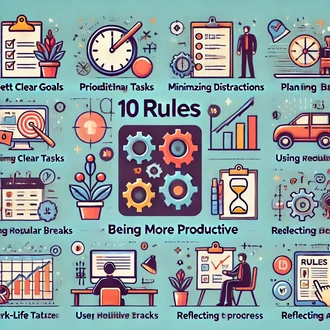Transcription Task and time optimization
Task and time optimization is essential to achieve greater productivity and efficiency in the workplace. When we manage our tasks effectively and make the most of our time, we can achieve better results and reduce the stress associated with our workload. In this session, we will explore various strategies and techniques to optimize our tasks and time to increase our productivity.
Setting priorities
The first step in optimizing our tasks and time is to set clear priorities. Identify the most important and urgent tasks, those that have a direct impact on your goals and results. By focusing on the priority tasks, you can ensure that you are investing your time and energy in activities that actually generate significant value.
Identify tasks that do not provide significant value or that could be done by someone else. Eliminate or delegate these tasks to free up time and resources that can be used on more relevant and productive activities.
Learning to delegate effectively is also an important skill to optimize your tasks and time. Delegating tasks to appropriate and reliable people not only allows you to focus on more important tasks, but also promotes the development of your collaborators.
Use time management techniques
There are numerous time management techniques that can help you optimize your tasks. Some of these techniques include the Pomodoro technique, the Eisenhower matrix and the 80/20 rule. The Pomodoro technique is based on working in 25-minute time intervals followed by short breaks, which helps maintain concentration and avoid mental fatigue.
The Eisenhower matrix ranks tasks according to their importance and urgency, making it easier to make decisions about which tasks to tackle first. The 80/20 rule suggests that 80% of our results come from the 20% of our most important activities, so it is important to identify and focus on those key activities.
Take advantage of the tools and technology available to optimize your tasks and time. There are numerous task management, calendar, reminder, and time tracking applications and software that can help you organize your activities and manage your time more effectively. Also, consider using automation tools for repetitive and time-consuming tasks, which will free up time for other, more valuable activities.
Practice focus and concentration
The ability to focus on one task at a time is critical to optimizing your tasks and time. Avoid unnecessary distractions and interruptions, such as constant email or social media notifications. Establish periods of time dedicated exclusively to specific tasks and avoid multitasking, as this can reduce the efficiency and quality of the work performed.
Routines and productive habits allow you to automate certain tasks and free your mind for more creative and strategic activities. Establish daily or weekly routines that include time for planning, goal review and reflection. In addition, develop healthy habits such as getting enough sleep, maintaining a balanced diet and exercising regularly, as these aspects can have a significant impact on your energy and your ability to perform your tasks efficiently.
Perform regular reviews and adjustments
Task and time optimization is an ongoing process. Conduct regular reviews of your routines and processes to identify areas for improvement and make necessary adjustments. Evaluate your results and look for learning and growth opportunities. Don't be afraid to experiment with new techniques or approaches to find what best suits your needs and work style.
time task optimization




